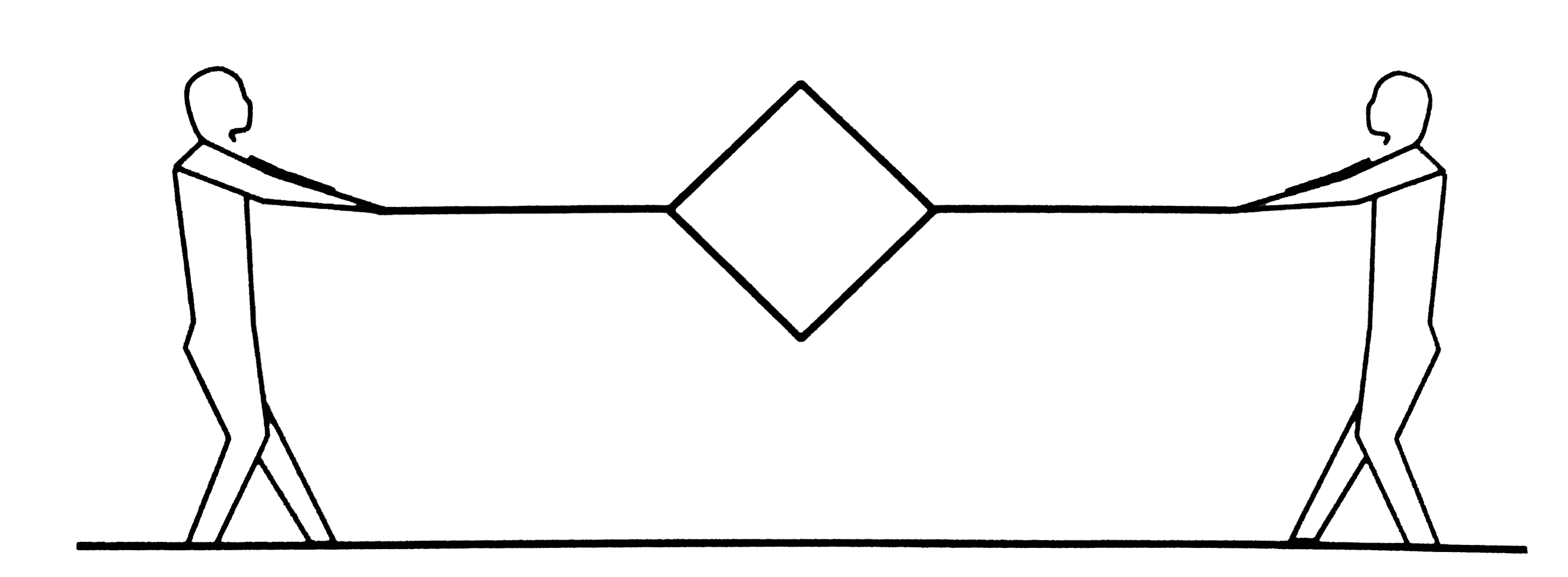Three particles, each having a charge of 10μC, are. placed at the vertices of an equilateral triabngle of side. 10 cm. Find the work done by a person in pulling them. apart to infinite separtions.Solution in Gujrati
The potential energy of the system in the intitial
condition is
U=3×(10μC)×10μC4πε0(10cm)<br>= ((3xx10(-10) C^2))xx ((9 xx10^9 Nm^2 C(-2))/(0.1 m) = 27 J.
When the charges are infinitely separted, the potential
energy is reduced to zero. If we asume that the charges
do not get kinetic energy in the process, the total
mechanical energy of the system decreases by 27J. Thus,
the work done by the person on the system is -27 J.
Topper's Solved these Questions
- ELECTRIC FIELD AND POTENTIALBOOK - HC VERMACHAPTER - ELECTRIC FIELD AND POTENTIALEXERCISE - Worked Out Examples
19 Videos
- ELECTRIC FIELD AND POTENTIALBOOK - HC VERMACHAPTER - ELECTRIC FIELD AND POTENTIALEXERCISE - Short Answer
14 Videos
- ELECTRIC CURRENT THROUGH GASESBOOK - HC VERMACHAPTER - ELECTRIC CURRENT THROUGH GASESEXERCISE - Exercises
23 Videos
- ELECTROMAGNETIC INDUCTIONBOOK - HC VERMACHAPTER - ELECTROMAGNETIC INDUCTIONEXERCISE - EXERCISE
9 Videos
Similar Questions
Charges 5.0×−7C,−2.5×−7Cand1.0×10−7C are
held fixed at the three cornners A, B, C of an equilateral triangle of side 10 cm. find the electric force on
. charge at C due to the rest two.
View SolutionThe charge on a proton is +1.6X10(−19)C and that on an electron is −1.6X10(−19)C. Does it mean that the electron has a charge 3.2X10(−19)C less than the charge of a proton?
View SolutionA discharge tube contains helium at a low pressure. A large potential difference is applied across the tube. Consider a helium atom that has just been ionized due to the detachment of an atomic electron. Find the ratio of the distance travelled by the free electron to that by the positive ion in a short time dt after the ionization.
View SolutionShown a metallic square frame of edga a in a vertical plane. A uniform magnetic field B exists in the space in a directon perpendicular to the plane of the figure. Two boys pull the opposite corners of the square ot deform it into a rhombus. They start pulling the corners t t=0 and sisplace the corners at a uniform speed u. (a) find the induced emf in the frame at the instant when the angles at these corners reduce to 60∘. (b) find the induced current in the frame at this instatnt if the total resistance of the frame is R. (c) Find the total charge which flows through a side of the frame by the time the square is deformed into a straight line.

View SolutionThree particles, each having a charge of 10μC, are. placed at the vertices of an equilateral triangle of side. 10 cm. Find the work done by a person in pulling them apart to infinite separations.
View SolutionTwo positive point charges of 0.2μCand0.01μC are placed 10 cm apart. Calculate the work done in reducing the distance to 5 cm.
View SolutionThe work done in bringing three particles each of mass 10 g from a large distance to the vertices of an equilateral triangle of side 10 cm is (approximately)
View SolutionElectric charge of 1 muC, -1 muC and 2 muC are placed in air at the corners A, B and C respectively of an equilateral triangle ABC having length of each side 10 cm. The resultant force on the charge at C is
View SolutionCharges 5μCand10μC are placed 1 m apart. Work done to bring these charges at a distance 0.5 m from each other is (k=9×109SI)
View SolutionThree charges are placed at the vertices of an equilateral triangle of side 10 cm. Assume q_(1)=1 muC,q_(2)=-2 muC and q_(3)=4 muC . Work done in separating the charges to infinity is
View SolutionTwo positive point charges 15 muC and 10 muC are 30 cm apart. Calculate the work done in bringing them closer to each other by 15 cm.
View Solution10 भुजा वाले समबाहु त्रिभुज के तीनों शीर्षों पर क्रमश: 20μC,30μC तथा 40μC के आवेशित कणों को रखने में कितना कार्य संपादित होगा ?
View Solution100 gm द्रव्यमान के तीन कण अनंत से लेकर किसी समबाहु त्रिभुज के शीर्षों पर रखे जाते है। यदि त्रिभुज की प्रत्येक भुजा 20 cm हो तो किया गया कार्य कितना होगा ?
View SolutionCalculate the work done in bringing four particles each of mass 10 g at the vertices of a square having side 10 cm, assuming that the particles are brought from infinitely large distance to the respective locations.
View SolutionCalculate the amount of work done to dissociate a system of three charge 1μC,1μCand−4μC placed on the vertices of an equilateral triangle of side 10 cm.
View SolutionCalculate the amount of work done to dissociate a system of three charges of 1muC, 1muC and -4 muC placed on the vertices of an equilateral triangle of side 10 cm.
View Solution
